Address
304 North Cardinal
St. Dorchester Center, MA 02124
Work Hours
Monday to Friday: 7AM - 7PM
Weekend: 10AM - 5PM
Address
304 North Cardinal
St. Dorchester Center, MA 02124
Work Hours
Monday to Friday: 7AM - 7PM
Weekend: 10AM - 5PM

In the bustling world of food service, the sandwich press has emerged as a cornerstone of efficiency and quality. This simple yet innovative appliance has transformed the way we prepare and serve sandwiches, burgers, and other grilled delights. As the demand for consistency and health standards rises, the importance of choosing the right sandwich press cannot be overstated. Enter the NSF-approved commercial sandwich press, a symbol of quality and reliability that is reshaping the culinary landscape. Today, we delve into the features that set these presses apart and the impact they have on the food service industry.
Commercial sandwich presses have experienced a significant surge in popularity within the foodservice industry, becoming a staple in many commercial kitchens. This rise can be attributed to several factors, all of which have contributed to the sandwich press’s transformation from a niche appliance to a must-have for any establishment looking to offer high-quality, freshly prepared sandwiches.
One of the primary reasons for this surge is the increasing demand for fast-casual dining options. With consumers seeking convenience without compromising on taste, sandwich shops and cafes have popped up everywhere, and these establishments rely heavily on commercial sandwich presses to ensure consistent, high-quality output. The ability to quickly and efficiently press a sandwich to perfection has become a competitive advantage in a market that values speed and quality.
Another driving force behind the popularity of commercial sandwich presses is the versatility they offer. These presses are not limited to making the traditional grilled cheese; they can handle a variety of breads, fillings, and cooking styles. From toasted subs to gourmet paninis, the possibilities are nearly endless, allowing chefs to cater to diverse tastes and dietary preferences.
In recent years, there has been a noticeable shift towards healthier eating habits. Commercial sandwich presses have capitalized on this trend by allowing for the creation of sandwiches that are not only delicious but also nutritious. The ability to cook ingredients with minimal oil and fat has made these presses a favorite among health-conscious consumers and establishments aiming to promote wellness.
The technological advancements in commercial sandwich presses have also played a pivotal role in their rise. Modern presses are equipped with features like adjustable heat settings, non-stick surfaces, and even digital displays for precise temperature control. These innovations have not only improved the cooking process but have also made it easier for operators to achieve the perfect sandwich every time.
Moreover, the convenience factor cannot be overlooked. Commercial sandwich presses are designed to be user-friendly, with simple controls and easy-to-clean surfaces. In a fast-paced kitchen environment, these features are invaluable, as they help streamline operations and reduce the risk of errors.
The rise of the sandwich press has also been influenced by the global influence of food culture. As the world becomes more interconnected, culinary trends from different regions are being embraced by diners around the globe. This has led to a surge in demand for international sandwiches, such as Italian paninis, Mexican tortas, and Japanese gyros, all of which can be effortlessly prepared using a commercial sandwich press.
The sustainability movement has also had a hand in the popularity of commercial sandwich presses. With an increasing emphasis on reducing food waste and using resources efficiently, these presses allow for precise portion control and reduced cooking times, which can help minimize excess ingredients and energy consumption.
Furthermore, the rise of social media and online reviews has amplified the importance of food presentation. A beautifully pressed sandwich, with its golden-brown crust and melted cheese, is an eye-catching dish that can attract customers and leave a lasting impression. Commercial sandwich presses are perfectly suited to produce these visually appealing results.
Lastly, the cost-effectiveness of commercial sandwich presses cannot be underestimated. While there is an initial investment, the long-term savings from increased efficiency, reduced waste, and the ability to serve a high volume of sandwiches make these presses a smart investment for any foodservice business.
In conclusion, the rise of commercial sandwich presses is a multifaceted phenomenon, driven by consumer demand for convenience, health, variety, and quality. As the foodservice industry continues to evolve, it’s clear that the sandwich press will remain a vital tool for any establishment aiming to stay ahead of the curve in the fast-paced world of quick-service dining.

NSF Approval: The Gold Standard in Commercial Kitchen Equipment
In the bustling world of commercial kitchens, where efficiency and safety reign supreme, the presence of NSF approval on a sandwich press is not just a label—it’s a seal of excellence. This certification stands as a testament to the stringent quality controls and safety measures that a product must undergo to earn it. Let’s delve into what NSF approval means and why it’s such a crucial mark of quality.
The National Sanitation Foundation (NSF) is an independent, not-for-profit organization that writes standards for food safety and water quality, and certifies products and systems that meet these standards. When a sandwich press earns NSF approval, it means that it has been rigorously tested and proven to meet or exceed the strictest standards for safety, performance, and material composition.
One of the key aspects of NSF approval is the focus on health and safety. The certification process involves thorough testing to ensure that the sandwich press is free from harmful materials, such as lead, cadmium, and other heavy metals. This is particularly important in commercial settings where the health of customers is at the forefront of every operation.
Moreover, the thermal performance of the sandwich press is evaluated to ensure that it can consistently and safely cook sandwiches to the correct internal temperature. This not only prevents foodborne illness but also guarantees that the product is cooked to perfection, every time.
The design and construction of the sandwich press are also scrutinized during the certification process. NSF standards require that the product is easy to clean and maintain, which is essential in preventing cross-contamination and maintaining a hygienic environment. The materials used must be non-reactive, meaning they won’t impart any flavors or odors onto the food, ensuring the integrity of the sandwich’s taste.
Energy efficiency is another critical factor. With the increasing emphasis on sustainability, NSF-approved sandwich presses are designed to consume less energy, reducing operational costs and the environmental footprint of foodservice establishments.
Beyond the immediate concerns of health and safety, NSF approval also addresses the long-term durability of the product. The certification process includes testing for mechanical strength, ensuring that the sandwich press can withstand the rigors of daily use in a commercial kitchen without compromising its structural integrity.
For operators in the food service industry, NSF approval is a significant differentiator. It provides them with peace of mind that they are investing in a product that has been independently verified to meet the highest standards. This can be a crucial factor in attracting customers who are looking for quality and safety in their dining experiences.
From a regulatory standpoint, NSF approval can also simplify compliance with local health codes. Many jurisdictions recognize NSF certification as a benchmark for product safety, which can streamline the approval process for new kitchen equipment.
For manufacturers, achieving NSF approval is a significant achievement. It requires a commitment to quality that is reflected in every aspect of the product lifecycle, from design and production to distribution and customer service. This dedication to excellence is what sets NSF-approved products apart in the competitive landscape of commercial kitchen equipment.
In summary, NSF approval is not just a label on a sandwich press; it’s a comprehensive assessment of the product’s ability to deliver on its promises of safety, performance, and quality. For those in the commercial kitchen industry, recognizing the value of this certification can be the difference between a satisfactory product and one that truly stands out in terms of reliability and customer satisfaction.

In the competitive world of commercial kitchen equipment, the presence of an NSF (National Sanitation Foundation) approval on a sandwich press is more than just a stamp of approval—it’s a testament to the product’s adherence to stringent health and safety standards. Here are some key features to consider when looking for an NSF approved sandwich press:
Material Quality: An NSF approved sandwich press is crafted from high-quality, food-grade materials. Look for stainless steel construction, as it’s durable, easy to clean, and resistant to rust and corrosion. The quality of the materials ensures that the press can withstand the rigors of a commercial kitchen environment.
Temperature Control: One of the most critical features of a sandwich press is its ability to maintain a consistent and even temperature. An NSF approved model will typically have precise temperature controls, allowing for the perfect toast and melt on your sandwiches. Look for a press with digital temperature settings for accuracy.
Non-Stick Coating: A non-stick surface is essential for ease of cleaning and to prevent food from sticking to the press. Ensure that the non-stick coating is also FDA-approved and free from harmful chemicals that could leach into your food.
Safety Features: Safety should always be a top priority in commercial kitchen equipment. An NSF approved sandwich press will come with features like automatic shut-off after a certain period of inactivity to prevent overheating and potential fires. It may also have cool-touch handles to prevent burns during use.
Heat Distribution: Uniform heat distribution is crucial for even cooking. Look for a sandwich press with a well-designed heating element that covers the entire cooking surface. This ensures that every slice of bread is toasted to perfection, with no cold spots or overly toasted edges.
Easy-to-Use Controls: The press should have intuitive controls that are easy to operate. A clear display with simple buttons or dials makes it easier for kitchen staff to set the desired cooking time and temperature without confusion or delays.
Size and Capacity: Consider the size and capacity of the sandwich press based on your kitchen’s needs. A larger capacity might be ideal for high-volume operations, while a compact model might be sufficient for smaller restaurants or cafes. Ensure that the press fits comfortably in your kitchen layout.
Portability and Maintenance: An NSF approved sandwich press should be easy to clean and maintain. Look for models with removable parts that can be washed in a dishwasher or easily wiped down. A press that is designed with portability in mind can also be a bonus, especially if you need to move it around the kitchen or for mobile catering services.
Energy Efficiency: Energy consumption is a significant factor in operating costs. An NSF approved sandwich press that is energy-efficient can help reduce your utility bills over time. Check for features like automatic temperature reduction when not in use.
Warranty and Support: A reliable warranty and customer support are indicators of a manufacturer’s confidence in their product. An NSF approved sandwich press should come with a solid warranty and easy access to customer service for any issues that may arise.
By focusing on these features, you can ensure that the sandwich press you choose not only meets the necessary health and safety standards but also offers practicality, efficiency, and durability for your commercial kitchen. Remember, an NSF approval is not just a label—it’s a promise of quality that can set your establishment apart in terms of food preparation and customer satisfaction.
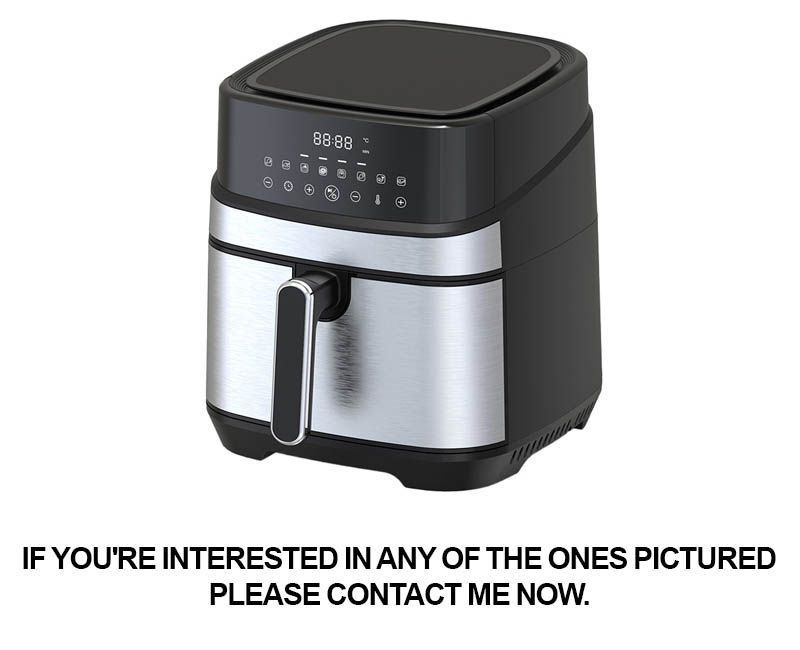
In the ever-evolving world of commercial kitchen appliances, the design of sandwich presses has seen a surge in innovation. These advancements not only enhance the efficiency of foodservice operations but also elevate the quality and consistency of the final product. Here are some key innovations shaping the design of NSF approved sandwich presses:
Variable Pressure SystemsModern sandwich presses often feature adjustable pressure systems, allowing operators to control the amount of pressure exerted on the sandwiches. This innovation ensures that every piece of bread is perfectly toasted and that the fillings are sealed in, resulting in a superior sandwich with a crispy exterior and a soft interior.
Precision Temperature ControlMaintaining consistent temperatures is crucial for achieving a perfectly toasted sandwich. New designs incorporate precise temperature control, often with digital displays that provide real-time feedback. This ensures that the sandwich press operates within a narrow temperature range, preventing over-toasting or under-toasting.
Non-Stick Coatings and MaterialsThe surfaces of sandwich presses have seen a significant improvement with the introduction of non-stick coatings and high-quality materials. These materials not only make cleaning easier but also reduce the risk of food sticking to the press, improving the longevity of the appliance and ensuring hygiene.
Smart AutomationWith the integration of smart technology, some sandwich presses now offer automation features. From automatic shut-off to programmable settings that can adjust the cooking time and temperature based on different sandwich types, these innovations save time and effort for kitchen staff.
Compact and Modular DesignsEfficient use of space is a priority in commercial kitchens, and sandwich presses have followed suit. Modern designs often feature compact profiles that can fit into tight kitchen spaces without compromising on performance. Additionally, some models are modular, allowing for easy integration into existing kitchen layouts or the ability to be disassembled for cleaning or storage.
Enhanced Heat DistributionImprovements in heat distribution technology have led to more even cooking across the sandwich press. This ensures that every corner of the sandwich is toasted to the desired level, which is especially important for maintaining consistency when producing large quantities of sandwiches.
Safety FeaturesSafety is paramount in commercial kitchens, and sandwich presses have incorporated various safety features. These include thermal cutouts that automatically turn off the appliance if it overheats, as well as easy-to-use handles and non-slip bases to prevent accidents.
Customizable Cooking PlatesSome models offer interchangeable cooking plates, allowing for a variety of sandwich options. Whether it’s for classic ham and cheese or gourmet creations, operators can choose plates that match their menu offerings, ensuring flexibility in kitchen operations.
Eco-Friendly DesignsSustainability is a growing concern in the foodservice industry. Innovations in sandwich press design now include eco-friendly materials and energy-efficient features, such as LED lighting and improved insulation, which help reduce energy consumption and lower operational costs.
User-Friendly InterfaceThe user interface has been refined to make sandwich presses more accessible and easier to use. Clear displays, intuitive controls, and simplified programming options mean that even kitchen staff with minimal training can operate these appliances effectively.
These innovations in sandwich press design reflect the industry’s commitment to improving efficiency, quality, and safety in commercial kitchens. With NSF approval, these appliances not only meet the highest standards of performance but also offer the latest technological advancements that enhance the overall dining experience.
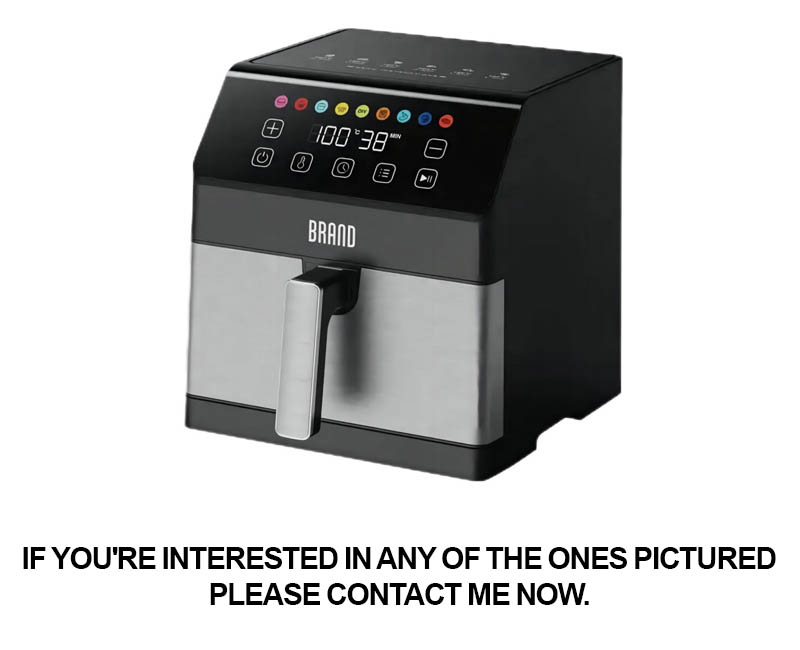
In the ever-evolving landscape of the commercial kitchen equipment market, the NSF (National Sanitation Foundation) approval has become a pivotal factor shaping trends. This certification, which is widely recognized for its stringent standards, has a profound impact on the direction and consumer preferences within the sandwich press industry.
One significant effect of NSF approval is the rise in consumer trust. When a sandwich press carries the NSF seal, it signals to buyers that the product has been rigorously tested and meets the highest hygiene and safety standards. This trust translates into a competitive edge for manufacturers, as customers are more likely to invest in equipment that promises quality and peace of mind.
The demand for NSF-approved sandwich presses has also influenced the design and functionality of these appliances. Manufacturers are under pressure to innovate, not just in terms of cooking performance but also in the durability and ease of use. This drive for innovation has led to a market where advanced features like non-stick surfaces, adjustable heat settings, and rapid heating times are becoming standard.
Moreover, the presence of NSF approval can lead to increased market share for certain brands. As health and safety concerns grow, operators in the food service industry are more inclined to invest in certified equipment. This shift has encouraged a market trend where premium sandwich presses, often with NSF approval, are seen as a necessary investment for high-quality food production.
The certification also plays a role in the global market. As more countries adopt international safety standards, the NSF mark becomes a recognized symbol of quality worldwide. This has opened up new opportunities for manufacturers to expand their reach and cater to a more diverse range of customers across borders.
Another trend influenced by NSF approval is the emphasis on energy efficiency. With environmental concerns on the rise, sandwich presses that are both energy-efficient and NSF-approved are becoming more attractive to environmentally conscious consumers and businesses. This has spurred a trend towards the development of energy-saving features, such as programmable timers and auto shut-off functions.
The certification also impacts the supply chain. Distributors and suppliers are more likely to prioritize NSF-approved products, knowing that they can offer their customers a reliable and compliant solution. This has led to a more streamlined procurement process for commercial kitchens, reducing the risk of non-compliance and ensuring that only the best equipment is used.
Furthermore, the presence of NSF approval can encourage cross-industry collaboration. For example, sandwich presses that are NSF-certified may find their way into non-traditional markets, such as healthcare facilities, where food safety is paramount. This interplay of trends expands the potential customer base and drives demand for versatile and high-quality sandwich presses.
In the realm of innovation, NSF approval has also spurred the creation of new types of sandwich presses. We’re seeing a surge in the development of compact models designed for countertop use, as well as larger, more robust models suited for high-volume operations. This diversity in the market caters to a wide array of commercial needs and preferences.
The certification’s influence extends to the way sandwich presses are marketed. Brands are now more likely to highlight the NSF mark in their promotional materials, underscoring the product’s commitment to quality and safety. This marketing strategy resonates with consumers and operators alike, reinforcing the importance of NSF approval as a key market trend.
Lastly, the impact of NSF approval on market trends cannot be overlooked in terms of regulatory compliance. As health codes and food safety regulations continue to evolve, the demand for NSF-approved equipment remains strong. This has led to a market where compliance is not just a trend but a necessity, pushing manufacturers to continually improve and innovate their products to meet these ever-changing standards.
In summary, the influence of NSF approval on market trends is multifaceted, from shaping consumer expectations to driving innovation and compliance. As the food service industry continues to prioritize safety and quality, the NSF mark remains a beacon of excellence and a driving force behind the evolution of commercial sandwich presses.
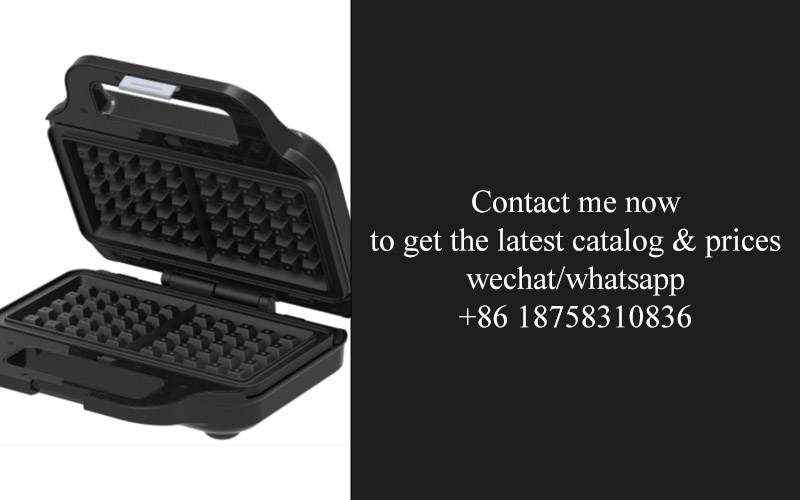
In the bustling world of food service, the applications of commercial sandwich presses have become as diverse as the menus they serve. From high-end cafes to busy fast-food joints, these versatile appliances have found their way into kitchens across various establishments. Let’s explore some of the real-world applications where these sandwich presses truly shine.
The all-day breakfast spot sees a steady stream of customers, each with their own preference for the perfect grilled cheese. A commercial sandwich press ensures that each sandwich is uniformly cooked, with the perfect blend of melted cheese and crispy edges. The consistent output not only satisfies the hunger of the patrons but also maintains a high level of quality control.
In the heart of a busy city, a gourmet sandwich shop offers a variety of artisanal sandwiches. The sandwich press here is not just a tool for cooking; it’s an integral part of the craft. It allows for the precise control of temperature and pressure, which is crucial for achieving the perfect crust on the bread and the right level of doneness for the fillings.
Fast-food chains have also embraced the sandwich press as a means to enhance their menu offerings. The ability to quickly and efficiently prepare a variety of sandwiches, from classic burgers to creative melts, has become a competitive advantage. These presses are designed to withstand the rigors of high-volume cooking, ensuring that every customer receives a hot, delicious sandwich in a timely manner.
Gourmet food trucks have turned the traditional sandwich press into a mobile kitchen centerpiece. With limited space, these trucks rely on compact, portable presses that can be easily stored and transported. These presses allow the food trucks to offer a variety of sandwiches, from gourmet to classic, while maintaining the integrity of the ingredients and the quality of the final product.
In the catering industry, sandwich presses are a staple for creating a wide array of finger foods. Whether it’s for a corporate event, a wedding, or a sports game, these presses can be used to make mini sandwiches, sliders, and other handheld treats. The convenience of these presses ensures that food can be served hot and fresh, even in the most demanding of settings.
Health-conscious consumers are increasingly looking for alternatives to traditional fast-food options. Salad shops and juice bars often use sandwich presses to create open-faced sandwiches or to press ingredients together for a unique presentation. This not only adds an element of fun to the meal but also allows for the inclusion of a variety of healthy ingredients that might otherwise be overlooked.
In the world of gourmet street food, the sandwich press has become a canvas for culinary creativity. From pressing a simple BLT into a visually stunning dish to infusing flavors into bread and fillings, these presses offer chefs the opportunity to experiment with textures and taste profiles. The result is a new wave of street food that is both innovative and accessible.
The use of sandwich presses in educational settings is also on the rise. Culinary schools and cooking classes often incorporate these appliances into their curriculum to teach students the basics of sandwich preparation. The hands-on experience with a commercial sandwich press can help future chefs develop skills that are essential in the professional kitchen.
In the world of sports, sandwich presses have found a place in athlete fueling stations. With the need for quick, nutritious meals after a workout, these presses can be used to prepare sandwiches that are both satisfying and easy to digest. The convenience of these presses ensures that athletes can refuel efficiently, regardless of their location.
In the realm of casual dining, sandwich presses are used to create a sense of nostalgia and comfort. Whether it’s a diner or a family-run restaurant, the familiar sound and sight of a sandwich being pressed can evoke memories of home-cooked meals. This not only adds to the ambiance of the establishment but also contributes to the overall dining experience.
The versatility of sandwich presses in the food service industry is undeniable. From the bustling streets of New York to the serene cafes of Paris, these appliances continue to play a pivotal role in creating a wide range of sandwiches that cater to the diverse tastes and preferences of consumers worldwide. Their ability to deliver consistent quality, speed, and innovation in food preparation makes them an indispensable tool in the modern kitchen.

In the bustling world of food service, where safety and quality are paramount, NSF certification has become a beacon of trust. This stamp of approval isn’t just a label; it’s a promise that the product meets stringent standards, ensuring a level of excellence that resonates with customers. Let’s delve into how NSF certification boosts customer confidence in the food service industry.
When a restaurant, café, or catering service proudly displays the NSF logo, it signals to patrons that their health and safety are a top priority. This certification is a testament to the rigorous testing and evaluation that the kitchen equipment undergoes. Customers, who are often concerned about foodborne illnesses and the cleanliness of dining establishments, find solace in this assurance.
The NSF certification process involves a thorough examination of the product’s design, materials, and manufacturing process. This means that the sandwich press, for instance, is not just about pressing sandwiches to perfection; it’s about ensuring that every component is safe, durable, and meets the highest hygiene standards. When customers see this certification, they infer that the entire food preparation process is under strict control.
Moreover, NSF certification is not a one-time achievement. It requires ongoing compliance and periodic retesting. This continuous oversight ensures that the product remains up to date with the latest safety regulations and industry best practices. Customers recognize this as a commitment to maintaining quality over time, reinforcing their trust in the establishment.
The psychological impact of NSF certification is significant. Customers are more likely to choose a place to dine or order food from if they see that the establishment has taken the extra step to ensure its products are safe. This choice is often influenced by subconscious perceptions of cleanliness and safety, which NSF certification helps to reinforce.
In the food service industry, where reputation can be made or broken on the strength of word-of-mouth, NSF certification serves as a powerful tool. It provides a level of credibility that can be difficult to achieve through marketing alone. When customers hear about a restaurant that has NSF-approved equipment, it’s often seen as a sign of professionalism and attention to detail.
Additionally, NSF certification can also have a ripple effect on customer loyalty. Once customers have experienced the peace of mind that comes with dining at an establishment that prioritizes safety, they are more likely to return. This loyalty is built on the foundation of trust, and NSF certification is a key component of that trust.
For operators in the food service industry, NSF certification can also open doors to new business opportunities. For example, some foodservice contracts require that equipment meets specific safety standards, and having NSF certification can make the difference between winning a bid and being overlooked. This, in turn, can lead to increased revenue and a competitive edge in the market.
In terms of marketing, NSF certification is a powerful tool. It can be prominently displayed on menus, advertisements, and even the physical establishment itself. This visible demonstration of commitment to quality and safety can attract new customers who are looking for a place they can trust with their health and well-being.
Lastly, NSF certification can also be a source of pride for the staff. Knowing that they work with equipment that has passed such rigorous testing can boost morale and encourage a culture of excellence within the kitchen. This pride is often reflected in the quality of service and the attention to detail in food preparation, which, in turn, enhances the overall dining experience for customers.
In conclusion, NSF certification is more than just a piece of paper or a label—it’s a symbol of quality, safety, and trust. In the food service industry, where these elements are the bedrock of customer satisfaction, NSF certification plays a pivotal role in bolstering customer confidence and driving success.
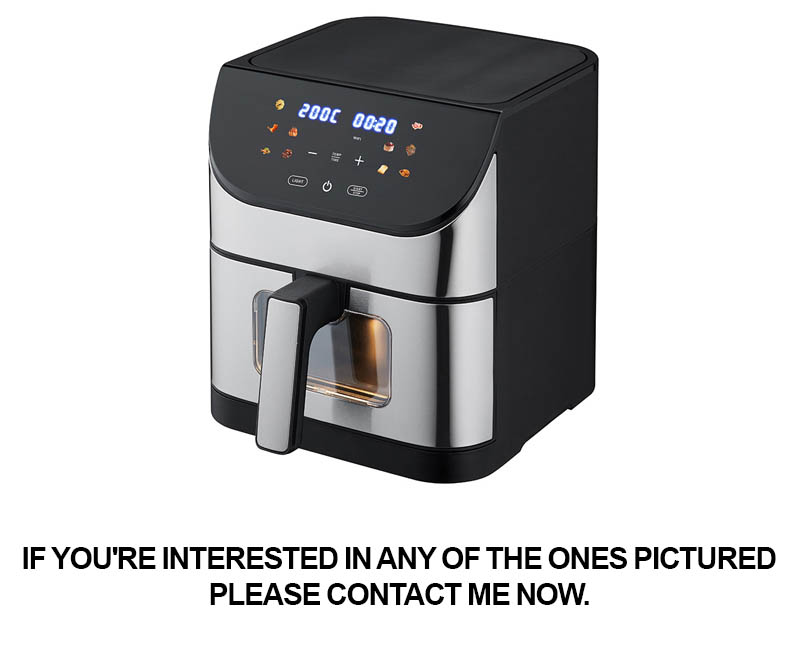
In the ever-evolving landscape of commercial kitchen equipment, the sandwich press has seen a remarkable transformation. From the humble beginnings of a simple, two-sided grill to the sophisticated, multi-functional appliances we see today, the sandwich press has become an essential tool in the food service industry. The integration of advanced technology, innovative designs, and increased focus on health and safety has propelled the future of commercial sandwich press technology to new heights. Let’s delve into the various aspects that define this dynamic field.
The integration of smart technology has revolutionized the way sandwich presses are used. Modern models often come equipped with digital temperature controls, allowing for precise and consistent cooking temperatures. This not only ensures the perfect texture and flavor of the sandwiches but also reduces the risk of undercooking or burning. Smart sensors can detect when the desired temperature has been reached, further enhancing the efficiency and ease of use for operators.
Sustainability is another key factor shaping the future of commercial sandwich press technology. As environmental concerns grow, manufacturers are focusing on creating more energy-efficient appliances. This includes the use of eco-friendly materials and energy-saving features that minimize the carbon footprint. Operators are increasingly looking for sandwich presses that not only perform well but also align with their sustainability goals.
The design of sandwich presses has evolved to cater to a wide range of culinary needs. Modular designs allow for easy customization, enabling operators to switch between different press types, such as panini presses, flat-top grills, or even waffle makers, with minimal effort. This versatility is particularly appealing in busy kitchens where a single machine can perform multiple tasks, reducing the need for additional equipment and saving valuable counter space.
Health and safety are paramount in the food service industry, and sandwich presses are no exception. The introduction of non-stick surfaces and removable parts that can be sanitized easily has made these appliances safer and more hygienic. Additionally, safety features like automatic shut-offs and overheating protection are becoming standard, ensuring that operators and customers are protected from accidents.
The rise of fast-casual dining has also influenced the design of commercial sandwich presses. These appliances are now built to withstand the rigors of high-volume operations, with durable construction and components that can handle constant use. The demand for quick and efficient service has driven the development of sandwich presses that can cook multiple sandwiches at once, streamlining the workflow and improving customer satisfaction.
The future of commercial sandwich press technology is also about enhancing the customer experience. Features like adjustable pressure settings allow for a variety of sandwich styles, from light and fluffy to crispy and toasted. Some models even come with built-in lighting, showcasing the sandwich’s golden-brown exterior to entice customers. The aesthetics of the sandwich press itself have become a factor, with sleek designs and user-friendly interfaces that add a touch of modernity to any kitchen.
The integration of social media and technology is another trend that’s shaping the future of sandwich presses. Operators are looking for appliances that can be integrated with digital platforms to share cooking times, recipes, and even real-time cooking progress with customers. This not only adds an interactive element to the dining experience but also encourages engagement and social sharing.
In terms of innovation, there’s a growing interest in alternative cooking methods. Some sandwich presses are now incorporating infrared heating, which provides a faster and more even cooking process. Others are exploring the use of induction technology, which offers precise temperature control and energy efficiency.
Lastly, the future of commercial sandwich press technology is about keeping up with consumer preferences. As the demand for healthier eating options continues to rise, sandwich presses are being designed to accommodate a wider range of ingredients, from gluten-free breads to plant-based proteins. The ability to customize sandwiches to meet dietary restrictions and preferences is becoming a hallmark of modern sandwich press technology.
In conclusion, the future of commercial sandwich press technology is a blend of smart features, sustainability, versatility, safety, and innovation. As the food service industry continues to evolve, the sandwich press is poised to play a pivotal role in shaping the way we enjoy our favorite meals.
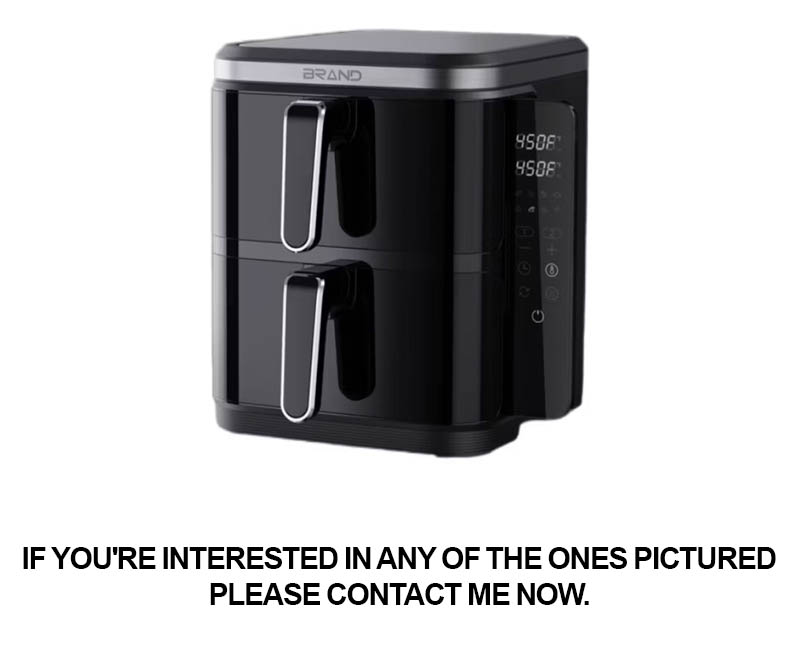
In the bustling heart of every kitchen, the presence of a reliable sandwich press is not just a tool but a symbol of efficiency and quality. NSF-approved sandwich presses stand out as a beacon of trustworthiness, and their impact on a kitchen’s daily operations is profound. Here’s why these sandwich presses are a must-have for any kitchen:
Their consistent performance is unparalleled. NSF certification ensures that these presses meet stringent safety and sanitation standards, delivering a reliable performance day in and day out. This means less downtime and more sandwiches served, keeping the line moving and the customers satisfied.
The durability of NSF-approved sandwich presses is second to none. These units are built to withstand the rigors of a commercial kitchen environment, with materials and construction that stand up to high temperatures, frequent use, and harsh cleaning agents. This longevity translates to a lower total cost of ownership over time.
Health and safety are paramount in the food service industry, and these presses are designed with these principles at their core. The NSF seal guarantees that the press is free from harmful chemicals and contaminants, which is crucial for maintaining a safe kitchen and ensuring the integrity of the food being prepared.
Innovation in design and functionality has made these sandwich presses not just a tool but a smart investment. From automatic shut-off features to adjustable pressure settings, these presses offer a level of convenience and control that can elevate the quality of the sandwiches being made.
The versatility of NSF-approved sandwich presses is undeniable. They can handle a variety of sandwich styles, from the classic ham and cheese to gourmet creations with multiple fillings. This adaptability is essential in kitchens where the menu changes frequently or where a diverse clientele demands a range of options.
From quick-service restaurants to hotels and hospitals, these sandwich presses have proven their worth in a multitude of real-world applications. They are the go-to choice for busy kitchens that need to churn out high-quality sandwiches quickly and efficiently.
The brand recognition that comes with NSF certification is invaluable. It serves as a mark of excellence that can boost the reputation of any kitchen. Customers often seek out establishments that use certified equipment, knowing they can expect a certain standard of quality and cleanliness.
The environmental impact of commercial kitchen equipment is increasingly being considered, and NSF-approved sandwich presses are often designed with sustainability in mind. Features like energy-efficient heating elements and materials that can be recycled or repurposed contribute to a greener kitchen.
In terms of service and support, NSF-approved sandwich presses are backed by manufacturers who stand behind their products. This means that in the unlikely event of a problem, there is a reliable support system in place to ensure minimal disruption to kitchen operations.
The competitive edge that comes with having an NSF-approved sandwich press is clear. In a market where customers are more discerning than ever, these presses can be a differentiator, setting a kitchen apart from its competitors.
When it comes to the future of commercial sandwich press technology, we can expect to see continued advancements in both functionality and efficiency. Innovations like touchless operation, integrated software for inventory management, and even predictive maintenance could become standard features.
In conclusion, NSF-approved sandwich presses are more than just kitchen appliances; they are a cornerstone of quality and reliability. Their ability to maintain high standards, their durability, and the peace of mind they provide to both operators and customers make them an indispensable part of any kitchen’s arsenal. Whether it’s a bustling café or a serene catering hall, these sandwich presses are the heartbeat of a kitchen, ensuring that every sandwich served is not just delicious, but also a testament to the kitchen’s commitment to excellence.